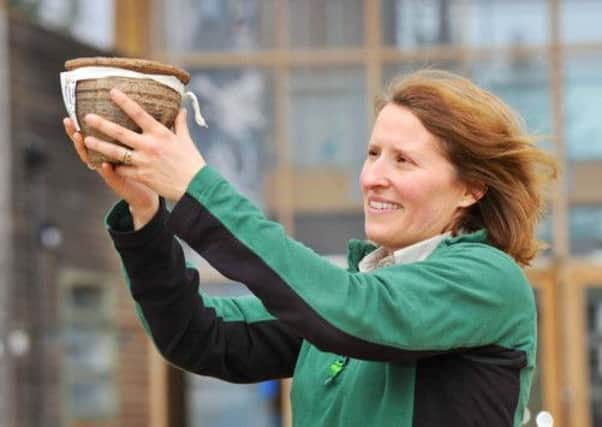Amateurs’ Bronze Age treasures to make their debut


Much of the archive was discovered by William Lamplough, his son David, then a boy, and John Lidster, all from Scarborough, who painstakingly spent evenings and weekends researching and cataloguing Bronze Age burial mounds, or barrows, that they discovered after the Second World War.
Now the collection – which includes around 40 items – has gone on public display for the first time in its entirety at the Forest Commission’s Dalby Forest Visitor Centre, near Pickering, close to where they were discovered.
Advertisement
Hide AdAdvertisement
Hide AdThe collection, includes ceramics, jet buttons, tools and part of a scabbard. Two years ago the archive was donated to the Yorkshire Museum by the late Mr Lamplough’s son, David, who lives in Scarborough.
Natalie McCaul, curator of archaeology at the Yorkshire Museum in York, said of the collection: “It’s very significant. It’s a real snapshot of what was going on in this area of North Yorkshire in the landscape.
“It’s a collection of objects that shows us how people were living and what they were doing.”
She said of Mr Lamplough and Mr Lidster: “They were quite advanced in what they did, for amateurs, they recorded everything.
Advertisement
Hide AdAdvertisement
Hide Ad“David, who gave us the collection, was William’s son and he was about eight or ten and he would go out with them.
“They would cycle out on their bikes and set up camp and then record the items and then bring them back on a cart attached to their bike.”
The artefacts were recovered by Mr Lamplough and Mr Lidster because they feared barrows could be destroyed by the post- war expansion of forestry. Today such sites are strictly protected by the Forestry Commission and each has its own management plan.
Indeed, many monuments and earthworks have survived when many similar monuments on agricultural land have been lost under the plough.
Advertisement
Hide AdAdvertisement
Hide AdIt was traditional for people to be cremated and their remains were then placed in vessels and belongings were also placed with them.
The items discovered by the intrepid team, who were members of the Scarborough Archaeological Society, will be on display at Dalby until May 2014 as part of a museum project to highlight the amazing pre- history of the UK’s biggest county.
Katie Thorn, from the Forestry Commission, said: “Most of the archive items were found around Bronze Age burial mounds in forests like Langdale and Broxa.
“Little is known about this period as it was nearly 1,000 years before the Romans came and we have no written records. But these artefacts do give us a precious and fascinating insight into life of our ancestors.”
Advertisement
Hide AdAdvertisement
Hide AdMiss McCaul added: “Since being donated we have been carefully cataloguing, photographing and researching the artefacts.
“Dalby is the perfect place to show them as we are very keen to link objects back to the landscape in which they were found.
“Simple objects can tell us quite a lot about the habits and customs of people who seem very distant in history but are very much part of our cultural fabric.”
The museum’s three-year Prehistory in Yorkshire project will focus on the county’s megalithic past, highlighting internationally renowned sites such as Star Carr, along with the Bronze Age and the Iron Age Arras culture, famed for its chariot burials.